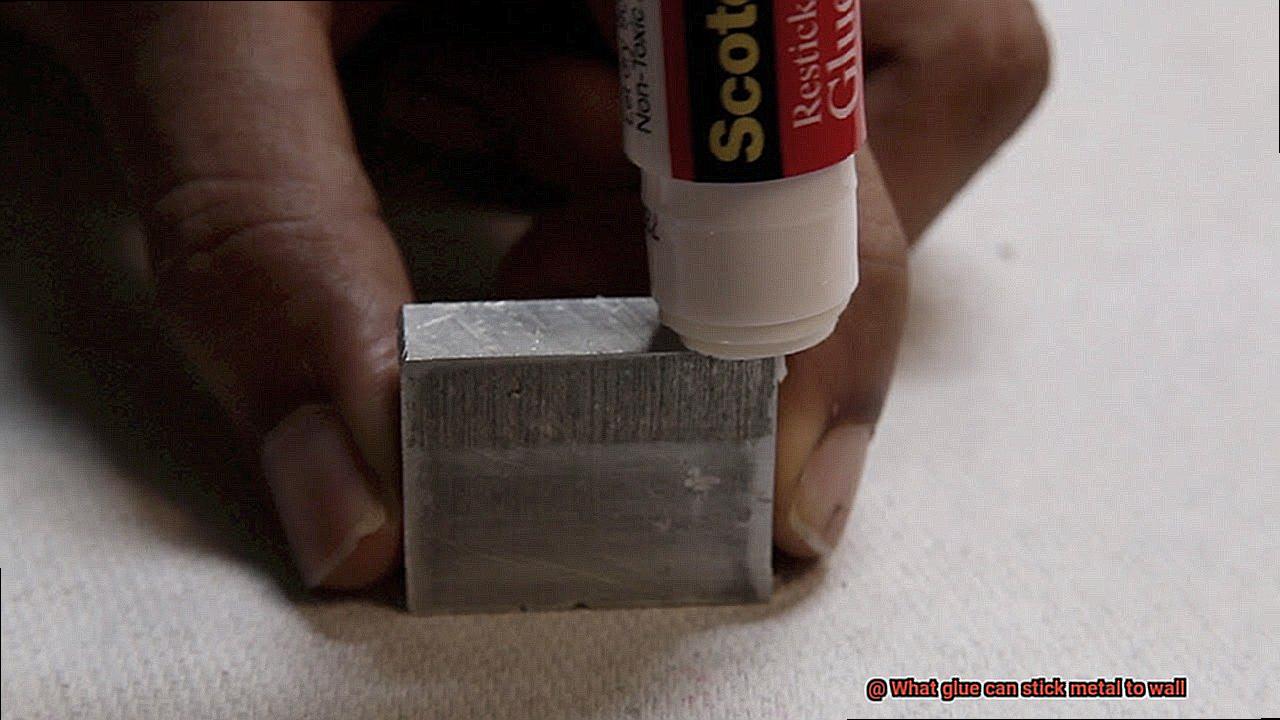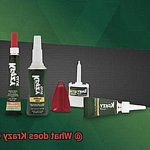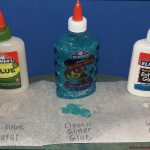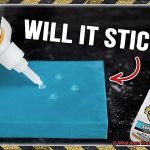Tired of drilling holes? Wanna hang metal without the hassle? You’re in luck. In this post, we’ll explore glues that stick metal to walls like magic.
But first, safety first. Wear gloves and work in a well-ventilated area. Clean both the metal and wall to remove any dirt or dust.
Now, let’s get down to business. For a strong bond, go for epoxy-based adhesives. They’re tough, durable, and made for metals. They can handle heat, moisture, and chemicals like a champ.
Here’s what you need: your metal object, epoxy adhesive, sandpaper or wire brush, clean cloth, and masking tape. Start by roughening the metal surface with sandpaper or a wire brush. This helps the glue grip better. Then wipe it clean with a cloth.
Now onto the wall. Give it a good wipe down and make sure it’s dry as a bone. Use masking tape to mark where you want your metal object to go.
Time to mix that epoxy adhesive. Follow the instructions on the package – usually equal parts resin and hardener. Stir until it’s all mixed up nicely.
Apply a thin layer of adhesive on the backside of your metal object. Cover the entire surface that will touch the wall. Press it firmly against the wall using your marked tape as a guide.
Now comes the waiting game. Let that adhesive cure for as long as recommended by the manufacturer. Support your metal object during this time to avoid any accidents.
What is Metal-to-Wall Bonding?
Contents
- 1 What is Metal-to-Wall Bonding?
- 2 Types of Glue Used for Metal-to-Wall Bonding
- 3 Advantages of Epoxy Adhesives
- 4 Considerations When Using Epoxy Adhesives
- 5 Advantages of Construction Adhesives
- 6 Considerations When Using Construction Adhesives
- 7 Advantages of Double-Sided Adhesive Tapes
- 8 Considerations When Using Double-Sided Adhesive Tapes
- 9 Conclusion
Metal-to-wall bonding plays a vital role in various industries, allowing for the secure attachment of metal objects or surfaces to walls. Whether you’re a construction professional, an interior designer, or a passionate DIYer, understanding the different adhesive options available is essential for achieving a strong and durable bond. In this comprehensive guide, we’ll explore the various adhesives suitable for metal-to-wall bonding, their properties, and tips for successful application.
Epoxy Adhesives:
Epoxy adhesives consist of two components – a resin and a hardener – that are mixed together before application. These versatile adhesives are known for their exceptional bonding strength, making them ideal for both decorative and structural applications. They offer resistance to temperature variations, moisture, and chemicals, ensuring a durable bond that can withstand heavy loads and vibrations.
Construction Adhesives:
Specifically formulated for construction projects, construction adhesives provide reliable and strong bonds on various surfaces, including walls. Available in cartridge form for easy application using a caulking gun, these adhesives boast high initial grab and quick curing time. They also exhibit excellent resistance to water and weather conditions, making them suitable for both indoor and outdoor applications.
Contact Adhesives:
Contact adhesives require application on both the metal surface and the wall surface. Once dry, pressure is applied to create a strong bond. These adhesives offer high bond strength and can effectively bond different materials together, including metal and various wall surfaces. They are particularly useful for bonding large metal objects or surfaces to walls.
Considerations for Choosing the Right Adhesive:
To choose the right adhesive for metal-to-wall bonding, it is important to consider several factors:
- Understand the properties of both the metal being bonded and the wall surface to select an adhesive suitable for their characteristics.
- Consider factors such as strength, durability, temperature resistance, flexibility, and drying time. Different adhesives have varying properties that make them better suited for specific applications.
- Proper surface preparation is crucial; ensure that both the metal surface and the wall surface are clean, dry, and free from contaminants. Thoroughly cleaning the surfaces with a suitable cleaner or solvent and allowing them to dry completely before applying the adhesive will help ensure a successful bond.
Types of Glue Used for Metal-to-Wall Bonding
When it comes to hanging metal objects on walls, finding the perfect glue is crucial for a secure and long-lasting bond. With a variety of options available, choosing the right adhesive can be overwhelming. In this article, we will delve into the different types of glues suitable for metal-to-wall bonding, helping you make an informed decision.
Epoxy Glue – The Unbreakable Bond:
Epoxy glue is the ultimate superhero when it comes to bonding metal to walls. With its exceptional strength and durability, epoxy forms a chemical bond with both the metal and the wall surface. It’s perfect for heavy-duty applications like attaching shelves or hooks. Simply mix the resin and hardener, apply it to the surfaces, and witness an unbreakable bond that can withstand even the toughest conditions.
Construction Adhesive – Strength and Versatility:
Construction adhesive is another reliable option for metal-to-wall bonding. Designed for heavy materials, including metal, it provides a strong bond that can handle significant weight. Whether you’re attaching brackets, frames, or decorative pieces, construction adhesive won’t let you down. Apply it using a caulking gun, and you’ll have a sturdy bond that stands the test of time.
Liquid Nails – Quick and Easy:
If you’re looking for user-friendly adhesive, Liquid Nails is your go-to choice. Available in various formulations, Liquid Nails offers options specifically designed for metal-to-wall bonding. Its liquid form makes it easy to apply using a caulking gun or squeeze tube. This adhesive creates a robust bond suitable for light to medium-weight metal objects like signs or small shelves.
Silicone Adhesive – Flexibility at Its Finest:
When flexibility is key, silicone adhesive is your best friend. It forms a flexible and waterproof bond, making it perfect for metal objects that may expand or contract due to temperature changes. Use silicone adhesive to attach metal trim or molding to walls and enjoy a bond that can handle movement without compromising strength.
Polyurethane Adhesive – The All-Rounder:
For a versatile adhesive that works on various materials, including metal, choose polyurethane adhesive. It provides a strong bond and excellent resistance to moisture, making it suitable for both indoor and outdoor applications. Whether you’re attaching metal panels or tiles to walls, polyurethane adhesive is your reliable companion.
Advantages of Epoxy Adhesives
Whether it’s a piece of artwork, a shelf, or a decorative metal accent, finding the right adhesive to keep them in place can be a challenge. Luckily, there’s a superhero in the world of adhesives that can save the day – epoxy adhesive.
Epoxy adhesives are known for their exceptional bonding strength. They create a strong and durable bond between metal surfaces and walls, ensuring that your metal objects stay securely attached. No more worrying about things crashing to the ground and causing damage.
But that’s not all – epoxy adhesives have many other advantages that make them the perfect choice for bonding metal to walls. Let’s dive into some of these advantages:

- Versatility: Epoxy adhesives are highly versatile and can be used to bond a wide range of materials, from metals to plastics, ceramics, and even wood. This makes them a popular choice in various industries such as construction, automotive, aerospace, and electronics.
- Chemical Resistance: Epoxy adhesives offer excellent resistance to chemicals, solvents, and environmental factors such as moisture and temperature changes. This means that they can withstand harsh conditions both indoors and outdoors, making them ideal for any application.
- Gap Filling Capabilities: One of the unique properties of epoxy adhesives is their ability to fill gaps between surfaces. This means that they can compensate for any irregularities or unevenness on the wall or the metal object, resulting in a tight and secure bond. No more worrying about gaps compromising the integrity of the adhesive.
- Durability: Once cured, epoxy adhesives exhibit excellent durability and resistance to wear and tear. They can withstand heavy loads, vibrations, and impacts without compromising the bond. This ensures that your metal objects stay firmly in place for the long haul.
- Temperature Resistance: Epoxy adhesives have high temperature resistance, making them suitable for bonding metal to walls in environments with elevated temperatures. They can withstand both high and low temperatures without losing their bonding strength, ensuring the longevity of the bond.
- Easy to Use: Epoxy adhesives are typically available in two-component formulations, where the resin and hardener are mixed together before application. This allows for precise control of the adhesive properties and ensures a proper bond. Additionally, epoxy adhesives are easy to apply and can be used with various application methods such as brush, roller, or syringe.
Considerations When Using Epoxy Adhesives
When it comes to bonding metal to walls, epoxy adhesives are the go-to choice for their exceptional strength and durability. However, achieving a successful bond requires careful consideration of several important factors. Let’s explore these considerations to ensure your epoxy adhesive application is a resounding success:
- Surface Preparation: Before diving into the application process, ensure that both the metal and wall surfaces are clean and free from any dirt, grease, or loose particles. A thorough cleaning with a degreaser and sanding, if necessary, will guarantee maximum adhesion and bond strength.
- Mixing Ratio: Epoxy adhesives typically consist of two parts – resin and hardener. Following the manufacturer’s instructions, it is crucial to mix these components in the correct ratio. Failing to do so can lead to weak bonding or improper curing. Take your time to measure and mix the epoxy components diligently for a robust bond.
- Working Time: Epoxy adhesives have a limited working time or pot life. This refers to the time available for application and positioning before the adhesive starts to cure. Work efficiently within this timeframe by planning your steps and having all materials ready beforehand.
- Temperature and Humidity: Pay attention to temperature and humidity conditions during application and curing as they can affect the epoxy adhesive’s curing process. Consult the manufacturer’s instructions for the ideal temperature and humidity range. Extreme temperatures or high humidity can hinder proper curing or even cause adhesive failure.
- Application Technique: To achieve optimum bonding, apply epoxy adhesives evenly and in thin layers. Excessive adhesive may result in gaps or uneven bonding, while insufficient adhesive may lead to weak bonds. Take your time and apply the adhesive carefully, ensuring full coverage of the bonding area.
- Clamping or Pressure Application: Some epoxy adhesives require clamping or applying pressure on the bond area during curing. This promotes maximum contact between the metal and the wall, ensuring a strong bond. Follow the manufacturer’s recommended clamping or pressure application instructions for optimal results.
- Curing Time: After applying epoxy adhesive, patience is key. Allow sufficient curing time before subjecting the bond to any stress or load. The recommended curing time may vary depending on the specific epoxy adhesive used, so refer to the manufacturer’s instructions for guidance.
- Selecting the Right Epoxy Adhesive: Epoxy adhesives come in various formulations and strengths. Choose an epoxy adhesive that is specifically designed for bonding metal to wall applications or one that suits your specific requirements. It’s essential to select a high-quality adhesive that matches the materials involved for a successful and long-lasting bond.
Advantages of Construction Adhesives
When it comes to securely attaching metal to walls, construction adhesives emerge as the superheroes of the construction world. These powerful adhesives offer a multitude of advantages that make them the top choice for professionals and DIY enthusiasts alike. In this article, we will delve into the numerous benefits of using construction adhesives for metal-to-wall applications.
Unyielding Bonding Strength:
Construction adhesives boast an impressive bonding strength that ensures a secure and long-lasting attachment between metal and walls. With their high-performance formulas, these adhesives eliminate the need for mechanical fasteners such as screws or nails, providing a clean and seamless finish.
Unmatched Versatility:
Versatility is one of the key superpowers of construction adhesives. They have the ability to bond various types of metals, including steel, aluminum, and copper, to different wall materials like drywall, concrete, or wood. Whether you’re working on indoor or outdoor projects, construction adhesives have got you covered.
Time and Cost Efficiency:
In the realm of construction, saving time and money is always a victory. Construction adhesives offer significant time and cost savings compared to traditional methods like welding or using screws. By eliminating the need for drilling holes or additional structures, these adhesives streamline the installation process, reducing labor costs and saving valuable time.
Enhanced Aesthetics:
Say farewell to unsightly fasteners or joints. Construction adhesives provide a sleek and seamless look when attaching metal objects to walls. Whether you’re mounting decorative pieces or fixtures, using adhesive ensures a smooth and flush finish, enhancing the overall aesthetics of your space.
Improved Soundproofing and Insulation:
Some construction adhesives go above and beyond their bonding capabilities by offering additional benefits like soundproofing and insulation properties. By creating an airtight seal between the metal and the wall, these adhesives help reduce noise transmission and improve thermal insulation in buildings.
Resistance to Moisture and Temperature:
Harsh environmental conditions stand no chance against construction adhesives. Many of these adhesives are designed to withstand moisture and extreme temperatures, making them suitable for both interior and exterior applications. You can rest easy knowing that your metal attachments will remain secure, unaffected by changes in humidity or temperature.
Effortless Application:
Do not fret about complicated application processes—construction adhesives are here to save the day. These adhesives come in user-friendly packaging, such as cartridges or squeeze tubes, allowing for easy application directly onto surfaces. Spread them with a caulk gun or a trowel, ensuring precise and controlled application. The adhesive’s long open time provides ample working time for adjustments before it sets.
Considerations When Using Construction Adhesives
When it comes to bonding metal to walls using construction adhesives, there are several important considerations to keep in mind. These considerations will ensure that you achieve a strong and durable bond that stands the test of time. So, before you embark on your adhesive adventure, let’s explore these key factors:
First and foremost, surface preparation is crucial. Before applying the adhesive, take the time to thoroughly clean both the metal and wall surfaces. Remove any dirt, grease, or debris that could hinder the bond. A simple wipe-down with a suitable cleaner or solvent will do the trick. Remember, cleanliness is key.
Next, choosing the right adhesive is paramount. With a wide variety of construction adhesives available, such as epoxy, polyurethane, and acrylic, it’s important to select one that suits your specific bonding needs. Epoxy adhesives offer high strength and moisture resistance, making them ideal for outdoor applications. On the other hand, polyurethane adhesives provide flexibility and bond well to various surfaces. So, consider the properties of each adhesive type and choose accordingly.
Temperature and humidity can greatly affect the performance of construction adhesives. Extreme temperatures can disrupt the curing process and weaken the bond. To avoid any mishaps, consult the manufacturer’s instructions for the recommended application conditions. By adhering to these guidelines, you’ll ensure optimal results.
Weight matters. Consider the weight of the metal object you’re bonding to the wall. Different construction adhesives have weight limits, so choose one that can handle the load. For heavier objects, it may be necessary to use mechanical fasteners or brackets in conjunction with the adhesive for added support and security.
Lastly, patience is a virtue when using construction adhesives. Allow sufficient time for the adhesive to cure and reach its maximum strength before subjecting it to any stress or load. Follow the manufacturer’s instructions for curing time and resist the urge to rush the process. Remember, a strong bond is worth the wait.
Advantages of Double-Sided Adhesive Tapes
Look no further because double-sided adhesive tapes are here to save the day. These tapes offer a multitude of advantages over traditional glue or other adhesive options. Let’s explore why double-sided adhesive tapes are the go-to choice for all your metal-to-wall bonding needs.
First and foremost, double-sided adhesive tapes are known for their strong bonding ability. They provide a secure and long-lasting bond between metal and walls, ensuring that your decorations stay firmly in place without any risk of detachment.
But the advantages don’t stop there. Double-sided adhesive tapes are incredibly easy to use. Simply peel off the backing paper and press the tape onto the desired surfaces. Say goodbye to messy glue mishaps and hello to hassle-free application.
Speaking of mess, double-sided adhesive tapes offer a clean and tidy application. They adhere smoothly and evenly to the surfaces, leaving no residue or mess behind. Your walls will thank you for choosing such a neat and tidy option.
Convenience is another key advantage of double-sided adhesive tapes. They come in various sizes and thicknesses, accommodating your needs whether you have small metal decorations or larger pieces to attach.
Durability is yet another standout feature of double-sided adhesive tapes. They can withstand temperature changes, moisture, and UV exposure, ensuring that the bond between your metal and the wall remains intact over time.
But wait, there’s more. Double-sided adhesive tapes offer versatility like no other. They can be used for hanging pictures, mounting shelves or hooks, attaching decorative elements, or securing signage. The possibilities are endless.
Last but not least, double-sided adhesive tapes are often removable and repositionable. If you ever need to change the placement of your metal item or remove it altogether, you can easily peel off the tape without damaging the surfaces.
Considerations When Using Double-Sided Adhesive Tapes
Considerations When Using Double-Sided Adhesive Tapes:
- Surface preparation: Clean, dry, and debris-free wall surface is essential for a strong bond. Use mild detergent and water to clean the surface before applying the tape.
- Type of metal: Different metals have varying levels of roughness and porosity, affecting adhesion. Smooth metals may require additional surface preparation, while rougher metals may not.
- Temperature and humidity: Check the manufacturer’s guidelines for recommended temperature range. Extreme temperatures and high humidity can weaken the bond. Consider tapes designed for specific temperature or humidity conditions.
- Weight and size of the object: Choose a tape strength that can adequately support the weight of the metal object. Larger and heavier objects may require multiple strips or wider tape.
- Longevity: Some tapes are designed for temporary applications, while others offer long-term durability. Consider resistance to aging, UV exposure, and temperature fluctuations for long-lasting bonds.
- Test adhesion strength: Before applying the tape, bond a small sample piece of metal to a similar wall surface and subject it to intended load or stress to ensure sufficient strength.
YMDZKL-hqeI” >
Also Read: How to Glue Vinyl to Metal?
Conclusion
When it comes to sticking metal to a wall, finding the right glue can be crucial. You don’t want your precious metal piece falling off and causing damage or injury. So, what glue should you use? Well, there are a few options that can do the job effectively.
One option is epoxy adhesive. This strong and durable glue is known for its ability to bond various materials, including metal and walls. Its two-part formula creates a powerful bond that can withstand heavy loads and extreme conditions. Just make sure to follow the instructions carefully when using epoxy adhesive.
Another reliable choice is construction adhesive. This versatile glue is designed for bonding different surfaces, including metal and walls. It provides a strong hold and can work well on both porous and non-porous surfaces. Apply it evenly on both the metal and wall, press them together firmly, and let it cure according to the manufacturer’s recommendations.
If you’re looking for a quick fix or temporary solution, you can try using double-sided mounting tape. This sticky tape is often used for hanging lightweight objects on walls, but it can also work for small metal pieces. Make sure to choose a tape specifically designed for heavy-duty applications if your metal piece is heavier.
In any case, before applying any glue or tape, ensure that both the metal surface and wall are clean and free from dust or grease. This will help maximize adhesion and improve the overall bond strength.
Remember, when choosing a glue to stick metal to a wall, consider factors such as weight load, durability requirements, and whether it needs to be removable in the future. By selecting the right adhesive for your specific needs, you can ensure a secure attachment that lasts long-term.
So next time you’re faced with the question of what glue can stick metal to a wall, you’ll have these options at your disposal – epoxy adhesive for strength and durability, construction adhesive for versatility, or double-sided mounting tape for quick fixes.






